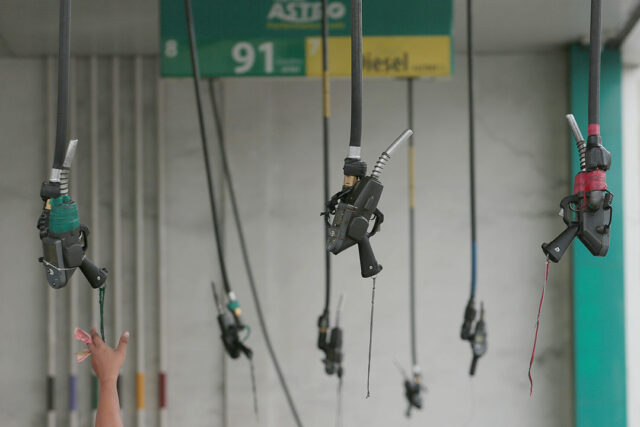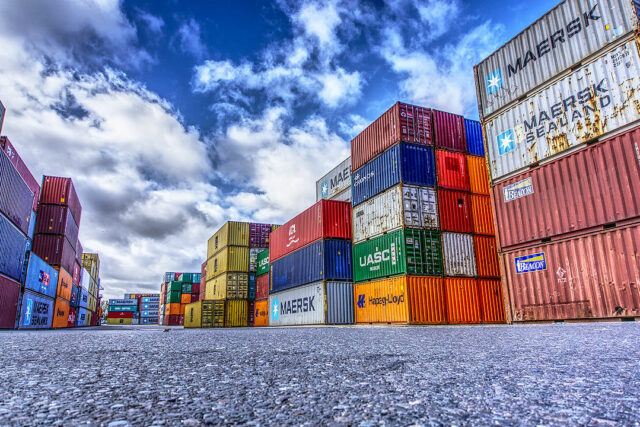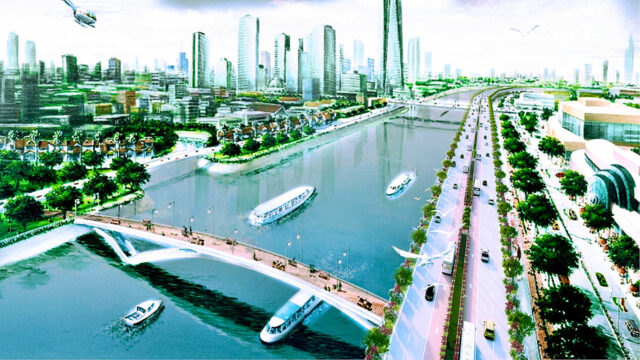Globe to hold annual stockholders’ meeting on April 26
NOTICE OF ANNUAL STOCKHOLDERS’ MEETING
AGENDA
1. Call to Order
2. Notice of Meeting, Determination of Quorum and Rules of Conduct and Procedures
3. Approval of Minutes of the Stockholders’ Meeting held on April 20, 2021
4. Annual Report of Officers and Audited Financial Statements
5. Ratification of All Acts and Resolutions of the Board of Directors and Management Adopted During the Preceding Year
6. Approval of Amendments to the Articles of Incorporation:
Seventh Article – To increase the Authorized Capital Stock
7. Election of Directors (Including the Independent Directors)
8. Approval of Increase in Directors’ Fees
9. Election of Independent Auditors and Fixing of their Remuneration
10. Consideration of Such Other Business as May Properly Come Before the Meeting
11. Adjournment

EXPLANATION OF AGENDA ITEMS
1. CALL TO ORDER. The Chairman of the Board of Directors, Mr. Jaime Augusto Zobel de Ayala, will call the meeting to order.
2. NOTICE OF MEETING, DETERMINATION OF QUORUM AND RULES OF CONDUCT AND PROCEDURES. The Corporate Secretary will certify on the date when written notice of the time, date, place and purpose of the meeting was sent to all stockholders of record as of March 11, 2022 and the date of publication of the notice in the newspapers of general circulation.
The Corporate Secretary will further certify the presence of a quorum. The holders of record for the time being of a majority of the stock of the Company then issued and outstanding and entitled to vote, represented in person or by proxy, shall constitute a quorum for the transaction of business.
Pursuant to Sections 57 and 23 of the Revised Corporation Code which allow voting in absentia by the stockholders, the Company has set up a designated online web address (uniform resource locator or URL), which may be accessed by the stockholders to register and vote in absentia on the matters for resolution at the meeting. A stockholder who votes in absentia as well as a stockholder who participates by remote communication shall be deemed present for purposes of quorum.
Unless otherwise amended, the following, are the rules of conduct and procedures at the meeting:
(i) Stockholders may attend the meeting by remote communication through the URL provided. Questions and remarks may be sent via e-mail prior to or during the meeting to corporatesecretary@globe.com.ph, and shall be limited to the items in the Agenda of the meeting.
(ii) Stockholders must notify the Company of their intention to participate in the meeting by remote communication through corporatesecretary@globe.com.ph to be included in the determination of quorum, together with the stockholders who voted in absentia and by proxy.
(iii) In the event that physical attendance will be allowed at the meeting –
- Anyone who wishes to make a remark shall identify himself after being acknowledged by the Chairman and shall limit his remarks to the item in the Agenda under consideration;
- Stockholders present at the meeting may opt for manual or electronic voting. For manual voting, each stockholder will be given, upon registration, a ballot where he can write his vote on every item in the Agenda or proposed resolution. For electronic voting, there will be computer stations near the registration table where stockholders may cast their votes electronically using a digital version of the ballot.
(iv) Each of the proposed resolutions will be shown on the screen during the livestreaming as the same is taken up at the meeting.
(v) Voting shall only be allowed for stockholders registered in the Company’s Voting in Absentia & Shareholder (VIASH) System or through the Chairman of the meeting as proxy. Detailed requirements and instructions pertaining to the VIASH System and the use thereof are provided in the Information Statement.
(vi) Stockholders voting in absentia, who have previously registered in the VIASH System, may cast their votes electronically at any time using the VIASH System prior to or during the meeting.
(vii) All the items in the Agenda requiring approval by the stockholders will need the affirmative vote of stockholders representing at least a majority of the issued and outstanding voting stock present at the meeting, unless the law requires otherwise.
(viii) Election of directors will be by plurality of votes and every stockholder will be entitled to cumulate his votes. Each outstanding share of stock entitles the registered stockholder to one vote.
(ix) The Office of the Corporate Secretary will tabulate all votes received and a firm selected for this purpose will validate the results. The Corporate Secretary shall report the results of voting during the meeting.
(x) The meeting proceedings shall be recorded in audio and video format.
3. APPROVAL OF MINUTES OF THE STOCKHOLDERS’ MEETING HELD ON APRIL 20, 2021. Copies of the minutes of the stockholders’ meeting held on April 20, 2021 will be made available to the stockholders before the meeting. Likewise, the minutes of the meeting are available at the Company website, www.globe.com.ph.
4. ANNUAL REPORT OF OFFICERS AND AUDITED FINANCIAL STATEMENTS. The Chairman, Mr. Jaime Augusto Zobel de Ayala, and the President and Chief Executive Officer (CEO), Mr. Ernest L. Cu, will deliver a report to the stockholders on the highlights of the Y2021 Company performance as reflected in the audited financial statements (AFS 2021), and the outlook for Y2022. The AFS as of December 31, 2021 will be included in the Information Statement to be sent to the stockholders at least 28 days prior to the meeting. The AFS 2021 will be released by the Company at least 60 days from the financial year end and available at the Company website, www.globe.com.ph.
A resolution noting the annual report and approving the AFS 2021 will be presented to the stockholders for approval by the affirmative vote of the stockholders representing at least a majority of the outstanding voting stock present at the meeting. Likewise, the stockholders will be given an opportunity to ask questions prior to submitting the AFS 2021 for their approval. Copies of the Information Statement and AFS 2021 will be made available to the stockholders before the meeting.
5. RATIFICATION OF ALL ACTS AND RESOLUTIONS OF THE BOARD OF DIRECTORS AND MANAGEMENT ADOPTED DURING THE PRECEDING YEAR. Ratification by the stockholders will be sought for all the acts and resolutions of the Board of Directors, Executive Committee, and other Board Committees and all acts of Management of the Company taken or adopted since the ASM on April 20, 2021 until April 26, 2022. The acts and resolutions of the Board and its Committees were reflected in the minutes of the meetings including approval of contracts and agreements, projects and investments, treasury matters and acts and resolutions covered by disclosures to the Securities and Exchange Commission, the Philippine Stock Exchange and applicable regulatory agencies. The acts of Management were those taken to implement the resolutions of the Board or its Committees or taken in the general conduct of business.
6. APPROVAL OF AMENDMENTS TO THE ARTICLES OF INCORPORATION TO INCREASE THE AUTHORIZED CAPITAL STOCK. Management will obtain approval of the Board on the proposed increase of Authorized Capital Stock (ACS) on or before April 25, 2022. In accordance with the Revised Corporation Code2, approval by the stockholders representing at least two-thirds (2/3) of the outstanding capital stock will be sought to increase the Corporation’s ACS from Ten Billion Two Hundred Forty-Six Million Seven Hundred Eighteen Thousand Six Hundred Fifty Pesos (Php 10,246,718,650.00) consisting of One Hundred Forty-Eight Million Nine Hundred Thirty-Four Thousand Three Hundred Seventy-Three (148,934,373) Common Shares with a par value of Fifty Pesos (Php 50.00) per share, One Hundred Sixty Million (160,000,000) Voting Preferred Shares with a par value of Five Pesos (Php 5.00) per share, and Forty Million (40,000,000) Non-Voting Preferred Shares with a par value of Fifty Pesos (Php 50.00) per share to Eleven Billion Two Hundred Forty-Six Million Seven Hundred Eighteen Thousand Six Hundred Fifty Pesos (Php 11,246,718,650.00) divided into One Hundred Sixty-Eight Million Nine Hundred Thirty-Four Thousand Three Hundred Seventy-Three (168,934,373) Common Shares with a par value of Fifty Pesos (Php 50.00) per share, One Hundred Sixty Million (160,000,000) Voting Preferred Shares with a par value of Five Pesos (Php 5.00) per share, and Forty Million (40,000,000) Non-Voting Preferred Shares with a par value of Fifty Pesos (Php 50.00) per share.
7. ELECTION OF DIRECTORS (INCLUDING THE INDEPENDENT DIRECTORS). In accordance with the By-Laws of the Company, the Manual of Corporate Governance as revised, and the SEC Rules, any stockholder including minority stockholders, may submit to the Nomination and Governance Committee the names of nominees to the Board of Directors. The Nomination and Governance Committee, in the exercise of its assigned task, will determine whether the nominees for the Board of Directors including the independent directors, have all the qualifications and none of the disqualifications to sit as members of the Board of Directors of the Company before submitting the nominees for election by the stockholders of the 11 members of the Board of Directors including the 3 independent directors. Copies of the curriculum vitae and profiles of the nominees to the Board of Directors will be provided in the Information Statement and on the Company website for examination by the stockholders.
8. APPROVAL OF INCREASE IN DIRECTORS’ FEES. Management will obtain approval of the Board on the proposed increase in directors’ fees on or before April 25, 2022. In accordance with the Revised Corporation Code and Company By-Laws3, the Company will seek approval of the stockholders representing at least a majority of the outstanding capital stock to increase the directors’ fees in the form of retainer fees, in addition to the current attendance fees for each non-executive director. Executive directors do not receive per diem compensation or any attendance fees per meeting.
9. ELECTION OF INDEPENDENT AUDITORS AND FIXING OF THEIR REMUNERATION. The Audit and Related Party Transactions (ARPT) Committee will endorse to the stockholders the appointment of the Independent Auditor for the ensuing year as well as the proposed remuneration of the Independent Auditor. The profile of the Independent Auditor will be provided in the Information Statement and on the Company website for examination by the stockholders.
10. CONSIDERATION OF SUCH OTHER BUSINESS AS MAY PROPERLY COME BEFORE THE MEETING. The Chairman will open the floor for comments and questions by the stockholders, and take up items included on the agenda received from stockholders in accordance with existing laws, rules and regulations of the Securities and Exchange Commission4.
11. ADJOURNMENT. Upon determination by the Corporate Secretary that there are no other matters to be considered, and on motion by a stockholder duly seconded, the Chairman shall declare the meeting adjourned.
Spotlight is BusinessWorld’s sponsored section that allows advertisers to amplify their brand and connect with BusinessWorld’s audience by enabling them to publish their stories directly on the BusinessWorld Web site. For more information, send an email to online@bworldonline.com.
Join us on Viber to get more updates from BusinessWorld: https://bit.ly/3hv6bLA.

















